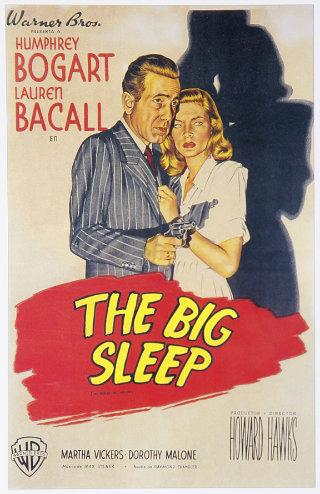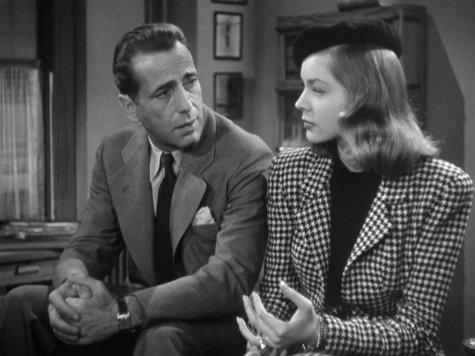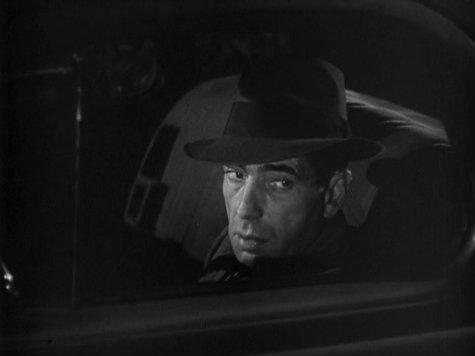
But down these mean streets a man must go who is not himself mean, who is neither tarnished nor afraid. The detective in this kind of story must be such a man. He is the hero, he is everything. He must be a complete man and a common man and yet an unusual man. He must be, to use a rather weathered phrase, a man of honor, by instinct, by inevitability, without thought of it, and certainly without saying it. He must be the best man in his world and a good enough man for any world. I do not care much about his private life; he is neither a eunuch nor a satyr; I think he might seduce a duchess and I am quite sure he would not spoil a virgin; if he is a man of honor in one thing, he is that in all things. (Raymond Chandler, The Simple Art of Murder, 1950)
That quote from Chandler is a distillation of what he felt were the characteristics of the fictional private eye, and it’s a view that continues to endure. The reason for the popularity of this particular representation is understandable enough: not only does it portray the detective as the classical hero, it also allows the audience to identify with him, to see in him the kind of man they’d probably like to be themselves. Chandler’s knight errant Philip Marlowe has appeared on screen a number of times with varying degrees of success, but the incarnation that I, and I guess a lot of other people too, have the highest regard for is Humphrey Bogart’s take in Howard Hawks’ The Big Sleep (1946).
Some aspects of the plotting of The Big Sleep are notoriously complicated – the story goes that screenwriters William Faulkner and Leigh Brackett, along with director Hawks, were so confused about who committed one of the murders that they contacted Chandler for clarification. Apparently, the author found himself similarly stumped. The thing is that the murders, motives and twists of the plot pile up so relentlessly that it does take a fair bit of concentration on the part of the viewer to keep up with it all. However, that’s not really the point of the movie and the basic thrust of the narrative is easy enough to follow in itself. Philip Marlowe (Humphrey Bogart) is the private detective engaged by the ailing General Sternwood (Charles Waldron) to take care of a blackmailer who is putting the squeeze on Carmen (Martha Vickers), the younger and wilder of his two daughters. In the course of his investigation, which rapidly descends into a murder case, Marlowe finds that the elder sister, Vivian (Lauren Bacall), appears to be tangled up in things too. Vivian’s a cooler, more composed customer than her sister, yet her involvement with a shady gambler, Eddie Mars (John Ridgely), indicates that she too is keeping dangerous company. I’m not going to go into the labyrinthine twists and turns of the plot here, firstly to avoid spoilers, and secondly because it will likely serve to do nothing more than confuse readers. Suffice to say the stories of General Sternwood’s two girls eventually dovetail and all the various plot strands are drawn together satisfactorily. Yet, as I said before, you don’t watch The Big Sleep just to find out who did what to whom, when and for what reason. This is truly one of those movies where the journey is far more important than the destination. As we follow Marlowe around a moody and threatening Los Angeles, we go on a tour of the seedy underbelly of the city. Even though the time is spent in the company of high rollers and the glamorous set, it’s all merely a glittering veneer for a world of pornography, drugs, deviance, betrayal and violence.

Vivian: I don’t like your manners.
Marlowe: And I’m not crazy about yours. I didn’t ask to see you. I don’t mind if you don’t like my manners, I don’t like them myself. They are pretty bad. I grieve over them on long winter evenings. I don’t mind your ritzing me or drinking your lunch out of a bottle. But don’t waste your time trying to cross-examine me.
One of the great pleasures of The Big Sleep is the dialog. Most of the memorable lines and passages, such as the little sample above, are lifted almost directly from the pages of Chandler’s novel. However, Brackett, Faulkner and Jules Furthman did have to make some alterations to turn in a workable script, both for storytelling reasons and to ensure the finished product was going to get past the Hays Office. Therefore, the more overt references to the unsavory nature of the blackmailer’s racket had to be toned down for example. The infamous production code is often criticized, and with good reason, for imposing draconian and logic-defying restrictions on what could be shown on the screen. The thing is though, a good deal could be implied if not directly stated, and clever writers could exploit this loophole. In a sort of perverse way, the very restrictiveness of the code meant that filmmakers were forced to be more creative in their efforts to circumvent it; I think The Big Sleep stands as an excellent example of this apparent paradox. The two houses in which much of the tale plays out are the Sternwood mansion and the home of Geiger, the blackmailer. Hawks and his crew succeed in bathing both locations in such an atmosphere of decadence and iniquity that it needs little imagination to appreciate the depravity lurking beneath the surface. Perhaps Hawks’ greatest triumph in the picture is the way he manages to ensure that style rises above substance throughout and he creates a crime story where the crimes and their resolution become secondary to our enjoyment of the ride through Chandler’s twilight world.
While The Big Sleep benefits enormously from a snappy script, strong source material and a first class director, what helps elevate it to true classic status is the casting. The second collaboration of Bogart and Bacall builds beautifully on the foundations already laid in To Have and Have Not. The movie took their on and off-screen courtship to new and more sophisticated levels, and the air fairly crackles whenever they share a scene. I think Bogart was born to play Marlowe, he perfectly encapsulates the weary nobility of Chandler’s creation like no other actor before or since. The part can be seen as an extension or refinement of Hammett’s Sam Spade from The Maltese Falcon, but there’s a greater sense of honor and less aggressive smugness this time. I already mentioned this in an earlier post, but Bogart’s delivery of his lines is perfect, so much so that it’s very hard to read the novel and not hear him saying the words. On the receiving end of much of Bogart’s wise-cracking, and pitching back every bit as good as she got, was Bacall. Watching her performance today, it’s hard to believe that Bacall wasn’t much past twenty years old when the movie was shot. There’s an air of assurance and worldliness about her that belies her years, the hard-boiled dialog flowing smoothly as though from a woman who’d been around a long time and had seen all there was to see. In truth, the whole cast does excellent work, but the women in particular stand out. Martha Vickers is all coy treachery, and there are fine and memorable bit parts for Dorothy Malone and Sonia Darrin. Of the men, I feel Elisha Cook Jr deserves a mention for another of his characteristic turns as an unfortunate fall guy. I guess the only real weakness was John Ridgely, it’s not that he gives a poor performance but he never fully convinces as a dangerous mobster – having said that, he does get one fantastic send off.

The US R1 DVD of The Big Sleep contains two versions of the movie (as far as I know the R2 doesn’t offer this choice) – the preview version and the theatrical cut. I mention this mainly because there are some notable differences in the two cuts. I’m not going to laboriously list all the changes here, that information is readily available elsewhere online, but I will say that they change the feel of the movie significantly. In short, the preview cut is an altogether blander affair, although it helps to make the plot more comprehensible. The theatrical version is much more stylish, placing more emphasis on the Bogart/Bacall dynamic while sacrificing some of the narrative coherence. Personally, I far prefer the theatrical cut, and not just because it’s the more familiar of the two. While the preview version does offer more exposition, it throws the pacing off balance and fails to fully capitalize on the chemistry of the star pairing. It’s nice to have it available for comparison purposes but that’s about it for me. The transfer is reasonable enough, maybe not up there with the best that Warner Brothers have done in the past but it’s certainly not poor. The disc also offers a short feature on the differences between the versions of the movie, and is useful in giving an overview if you don’t feel inclined to watch both cuts all the way through. This movie and The Maltese Falcon helped cement Bogart’s image as the archetypical private eye. Others have played the part of Marlowe, and others have taken on the role of various private detectives, but Bogart nailed it. The film as a whole, can be viewed as a film noir (although of the lighter variety), a crime/detective story, or simply as an outstandingly well-crafted piece of classic Hollywood filmmaking. It comes most highly recommended.
